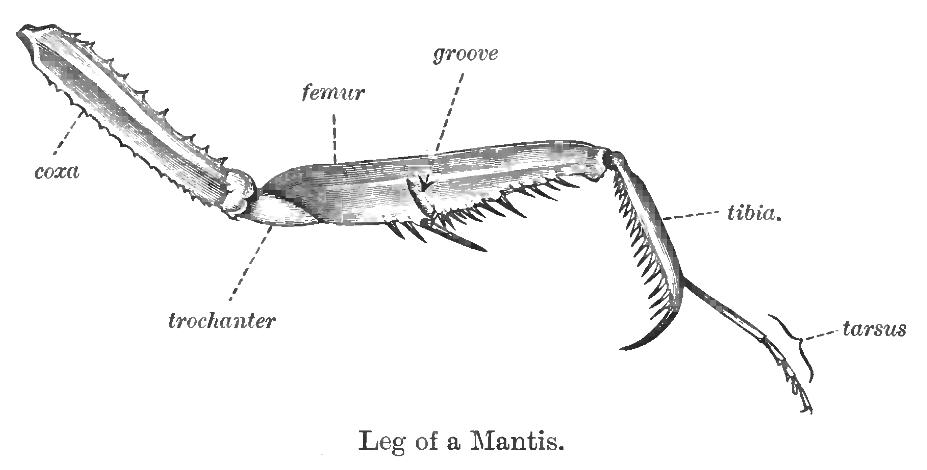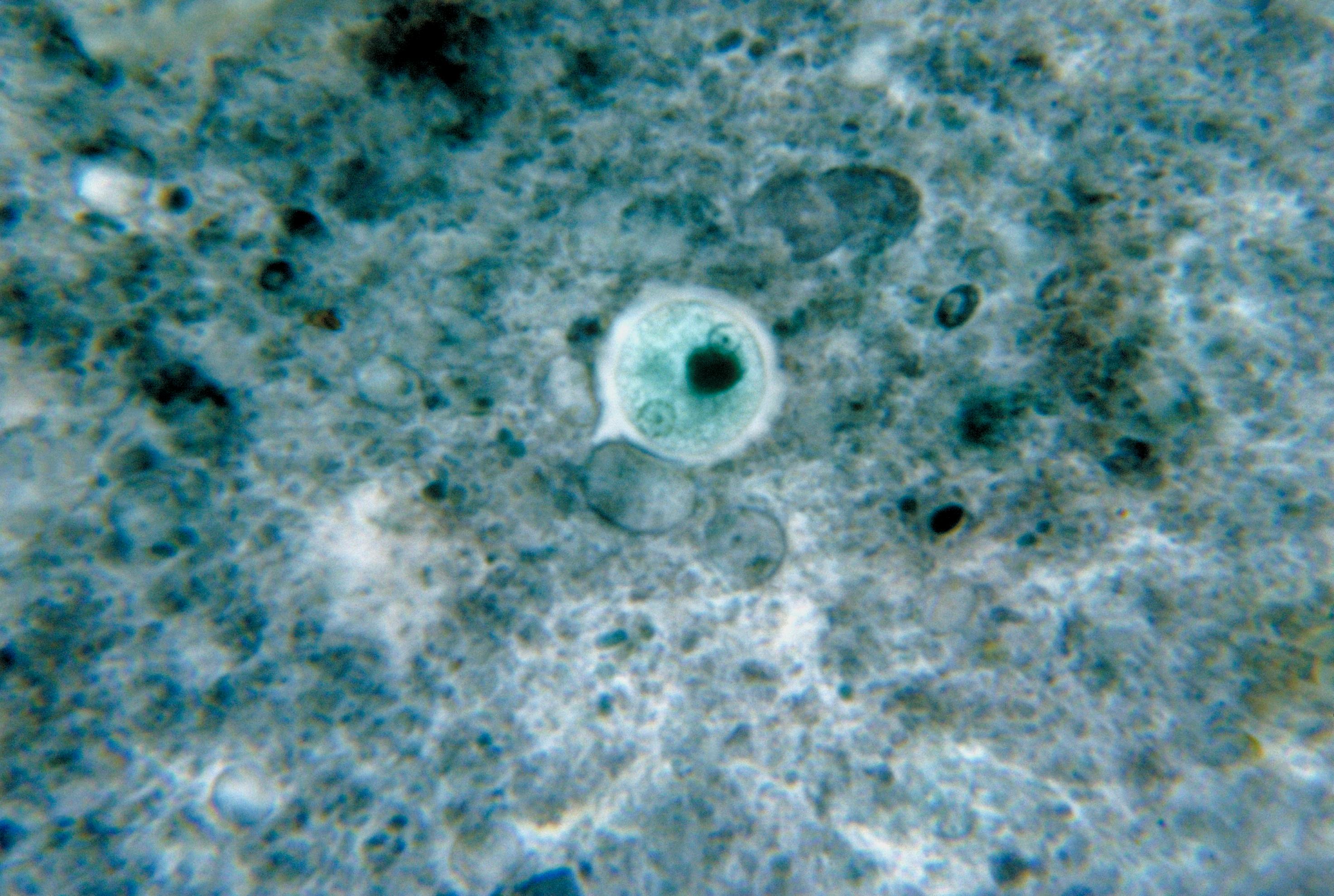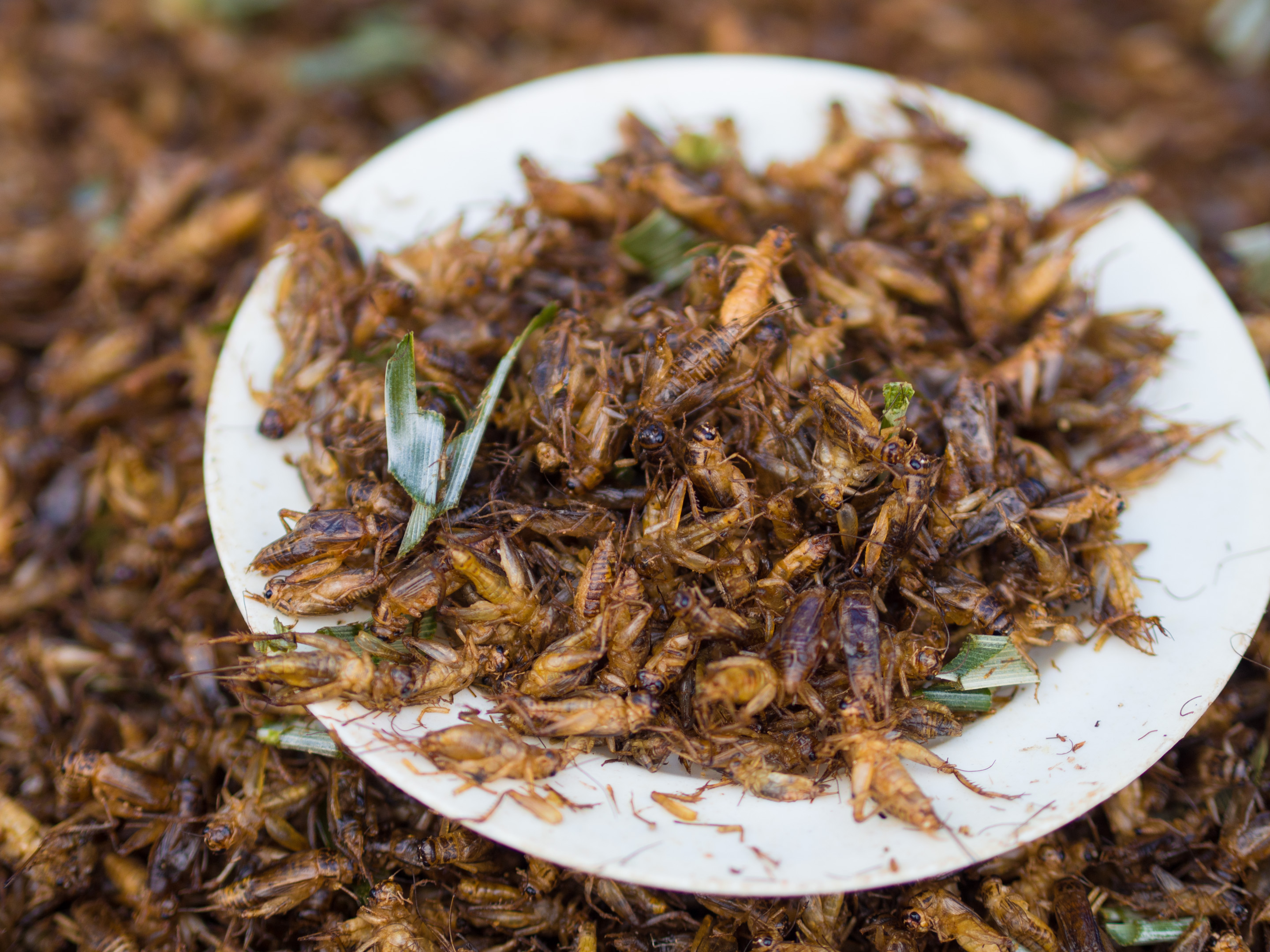|
Paragordius Varius
''Paragordius varius'' is a parasite species in the horsehair worm group (Nematomorpha). They cycle between terrestrial and aquatic habitats and are most commonly known for their ability to manipulate their definitive host to jump into a pool of water, which allows them to complete their life cycle. Adults are over 10 cm long and 400 μm in diameter. ''P. varius'' is usually found in water or wet areas. The definitive hosts are mainly terrestrial arthropods, most often carabid beetles, crickets and praying mantids. Morphology ''Paragordius varius'' have a slightly off-center mouth and distinct grooves running along its cylindrical body. Male worms can grow to be 12–29 cm in length whereas females are generally longer and can grow to be 12–31 cm in length. This parasite is a pseudocoelomate whose body consists of an areole containing cuticle layer, monolayer hypoderm, muscular layer, ventral nerve cord and a digestive tract. Life cycle and reproduction The life ... [...More Info...] [...Related Items...] OR: [Wikipedia] [Google] [Baidu] |
Joseph Leidy
Joseph Mellick Leidy (September 9, 1823 – April 30, 1891) was an American paleontologist, parasitologist and anatomist. Leidy was professor of anatomy at the University of Pennsylvania, later was a professor of natural history at Swarthmore College and the director of scientific and educational programs at the Wagner Free Institute of Science. His book ''Extinct Fauna of Dakota and Nebraska'' (1869) contained many species not previously described and many previously unknown on the North American continent. At the time, scientific investigation was largely the province of wealthy amateurs. The Leidy Glacier in northwest Greenland was named by Robert Peary after him. Early life and family Joseph Leidy was born on September 9, 1823, to an established Philadelphia family of Pennsylvania Germans. His father, Philip, was a hatter; his mother, Catharine, died during childbirth when he was young. His father then married his wife's first cousin, Christiana Mellick. Leidy also ha ... [...More Info...] [...Related Items...] OR: [Wikipedia] [Google] [Baidu] |
Horsehair Worm
Nematomorpha (sometimes called Gordiacea, and commonly known as horsehair worms, hairsnakes, or Gordian worms) are a phylum of parasitoid animals superficially similar to nematode worms in morphology, hence the name. Most species range in size from long, reaching 2 metres in extreme cases, and in diameter. Horsehair worms can be discovered in damp areas, such as watering troughs, swimming pools, streams, puddles, and cisterns. The adult worms are free-living, but the larvae are parasitic on arthropods, such as beetles, cockroaches, mantises, orthopterans, and crustaceans. About 351 freshwater species are known and a conservative estimate suggests that there may be about 2000 freshwater species worldwide. The name "Gordian" stems from the legendary Gordian knot. This relates to the fact that nematomorphs often coil themselves in tight balls that resemble knots. Description and biology Nematomorphs possess an external cuticle without cilia. Internally, they have only longitudinal ... [...More Info...] [...Related Items...] OR: [Wikipedia] [Google] [Baidu] |
Carabid
Ground beetles are a large, cosmopolitan family of beetles, the Carabidae, with more than 40,000 species worldwide, around 2,000 of which are found in North America and 2,700 in Europe. As of 2015, it is one of the 10 most species-rich animal families. They belong to the Adephaga. Members of the family are primarily carnivorous, but some members are phytophagous or omnivorous. Description and ecology Although their body shapes and coloring vary somewhat, most are shiny black or metallic and have ridged wing covers (elytra). The elytra are fused in some species, particularly the large Carabinae, rendering the beetles unable to fly. The species '' Mormolyce phyllodes'' is known as violin beetle due to their peculiarly shaped elytra. All carabids except the quite primitive flanged bombardier beetles (Paussinae) have a groove on their fore leg tibiae bearing a comb of hairs used for cleaning their antennae. Defensive secretions Typical for the ancient beetle suborder Adephaga ... [...More Info...] [...Related Items...] OR: [Wikipedia] [Google] [Baidu] |
Crickets
Crickets are orthopteran insects which are related to bush crickets, and, more distantly, to grasshoppers. In older literature, such as Imms,Imms AD, rev. Richards OW & Davies RG (1970) ''A General Textbook of Entomology'' 9th Ed. Methuen 886 pp. "crickets" were placed at the family level (''i.e.'' Gryllidae), but contemporary authorities including Otte now place them in the superfamily Grylloidea. The word has been used in combination to describe more distantly related taxa in the suborder Ensifera, such as king crickets and mole crickets. Crickets have mainly cylindrically-shaped bodies, round heads, and long antennae. Behind the head is a smooth, robust pronotum. The abdomen ends in a pair of long cerci; females have a long, cylindrical ovipositor. Diagnostic features include legs with 3-segmented tarsi; as with many Orthoptera, the hind legs have enlarged femora, providing power for jumping. The front wings are adapted as tough, leathery elytra, and some crickets ch ... [...More Info...] [...Related Items...] OR: [Wikipedia] [Google] [Baidu] |
Praying Mantids
Mantidae is one of the largest families in the order of praying mantises, based on the type species ''Mantis religiosa''; however, most genera are tropical or subtropical. Historically, this was the only family in the order, and many references still use the term "mantid" to refer to any mantis. Technically, however, "mantid" refers only to members of the family Mantidae, and not the 14 remaining families of mantises. Some of the most recent classifications have promoted a number of the mantid subfamilies to the rank of family, e.g. Iridopterygidae, Sibyllidae, Tarachodidae, Thespidae, and Toxoderidae, while other classifications have reduced the number of subfamilies without elevating to higher rank. Subfamilies and genera Following the major revision of the Mantodea in 2019, the ''Mantodea Species File'' includes ten subfamilies: Choeradodinae The Americas, Asia * '' Asiadodis'' Roy, 2004 * ''Choeradodis'' Serville, 1831 * †'' Prochaeradodis'' Piton, 1940 Deroma ... [...More Info...] [...Related Items...] OR: [Wikipedia] [Google] [Baidu] |
Pseudocoelomate
The coelom (or celom) is the main body cavity in most animals and is positioned inside the body to surround and contain the digestive tract and other organs. In some animals, it is lined with mesothelium. In other animals, such as molluscs, it remains undifferentiated. In the past, and for practical purposes, coelom characteristics have been used to classify bilaterian animal phyla into informal groups. Etymology The term ''coelom'' derives from the Ancient Greek word (), meaning 'cavity'. Structure Development The coelom is the mesodermally lined cavity between the gut and the outer body wall. During the development of the embryo, coelom formation begins in the gastrulation stage. The developing digestive tube of an embryo forms as a blind pouch called the archenteron. In Protostomes, the coelom forms by a process known as schizocoely. The archenteron initially forms, and the mesoderm splits into two layers: the first attaches to the body wall or ectoderm, forming ... [...More Info...] [...Related Items...] OR: [Wikipedia] [Google] [Baidu] |
Paratenic Host
In biology and medicine, a host is a larger organism that harbours a smaller organism; whether a parasitic, a mutualistic, or a commensalist ''guest'' (symbiont). The guest is typically provided with nourishment and shelter. Examples include animals playing host to parasitic worms (e.g. nematodes), cells harbouring pathogenic (disease-causing) viruses, a bean plant hosting mutualistic (helpful) nitrogen-fixing bacteria. More specifically in botany, a host plant supplies food resources to micropredators, which have an evolutionarily stable relationship with their hosts similar to ectoparasitism. The host range is the collection of hosts that an organism can use as a partner. Symbiosis Symbiosis spans a wide variety of possible relationships between organisms, differing in their permanence and their effects on the two parties. If one of the partners in an association is much larger than the other, it is generally known as the host. In parasitism, the parasite benefits at the ... [...More Info...] [...Related Items...] OR: [Wikipedia] [Google] [Baidu] |
Encyst
A microbial cyst is a resting or dormant stage of a microorganism, usually a bacterium or a protist or rarely an invertebrate animal, that helps the organism to survive in unfavorable environmental conditions. It can be thought of as a state of suspended animation in which the metabolic processes of the cell are slowed and the cell ceases all activities like feeding and locomotion. Encystment, the formation of the cyst, also helps the microbe to disperse easily, from one host to another or to a more favorable environment. When the encysted microbe reaches an environment favorable to its growth and survival, the cyst wall breaks down by a process known as excystation. In excystment, the exact stimulus is unknown for most protists. Unfavorable environmental conditions such as lack of nutrients or oxygen, extreme temperatures, lack of moisture and presence of toxic chemicals, which are not conducive for the growth of the microbeEugene W. Nester, Denise G. Anderson, C. Evans Roberts ... [...More Info...] [...Related Items...] OR: [Wikipedia] [Google] [Baidu] |
Metamorphosis
Metamorphosis is a biological process by which an animal physically develops including birth or hatching, involving a conspicuous and relatively abrupt change in the animal's body structure through cell growth and differentiation. Some insects, fish, amphibians, mollusks, crustaceans, cnidarians, echinoderms, and tunicates undergo metamorphosis, which is often accompanied by a change of nutrition source or behavior. Animals can be divided into species that undergo complete metamorphosis (" holometaboly"), incomplete metamorphosis ("hemimetaboly"), or no metamorphosis (" ametaboly"). Scientific usage of the term is technically precise, and it is not applied to general aspects of cell growth, including rapid growth spurts. Generally organisms with a larva stage undergo metamorphosis, and during metamorphosis the organism loses larval characteristics. References to "metamorphosis" in mammals are imprecise and only colloquial, but historically idealist ideas of transformation ... [...More Info...] [...Related Items...] OR: [Wikipedia] [Google] [Baidu] |
Definitive Host
In biology and medicine, a host is a larger organism that harbours a smaller organism; whether a parasitic, a mutualistic, or a commensalist ''guest'' (symbiont). The guest is typically provided with nourishment and shelter. Examples include animals playing host to parasitic worms (e.g. nematodes), cells harbouring pathogenic (disease-causing) viruses, a bean plant hosting mutualistic (helpful) nitrogen-fixing bacteria. More specifically in botany, a host plant supplies food resources to micropredators, which have an evolutionarily stable relationship with their hosts similar to ectoparasitism. The host range is the collection of hosts that an organism can use as a partner. Symbiosis Symbiosis spans a wide variety of possible relationships between organisms, differing in their permanence and their effects on the two parties. If one of the partners in an association is much larger than the other, it is generally known as the host. In parasitism, the parasite benefits at the ... [...More Info...] [...Related Items...] OR: [Wikipedia] [Google] [Baidu] |
Acheta Domesticus
''Acheta domesticus'', commonly called the house cricket, is a cricket most likely native to Southwestern Asia, but between 1950 and 2000 it became the standard feeder insect for the pet and research industries and spread worldwide. They can be kept as pets themselves, as this has been the case in China and Japan. Description The house cricket is typically gray or brownish in color, growing to in length. Males and females look similar, but females will have a needle from the rear, around long. The ovipositor is brown-black, and is surrounded by two appendages. On males, the cerci are also more prominent and house crickets are also omnivores. Diet The house cricket is an omnivore that eats a range of plant and animal matter. Crickets in the wild consume flowers, seeds, leaves, fruits, grasses and other insects (including dead members of their own species). Crickets in captivity will accept fruits (e.g. apples, oranges, bananas), vegetables (e.g. potatoes, carrots, squash ... [...More Info...] [...Related Items...] OR: [Wikipedia] [Google] [Baidu] |
Nematomorpha
Nematomorpha (sometimes called Gordiacea, and commonly known as horsehair worms, hairsnakes, or Gordian worms) are a phylum of parasitoid animals superficially similar to nematode worms in morphology, hence the name. Most species range in size from long, reaching 2 metres in extreme cases, and in diameter. Horsehair worms can be discovered in damp areas, such as watering troughs, swimming pools, streams, puddles, and cisterns. The adult worms are free-living, but the larvae are parasitic on arthropods, such as beetles, cockroaches, mantises, orthopterans, and crustaceans. About 351 freshwater species are known and a conservative estimate suggests that there may be about 2000 freshwater species worldwide. The name "Gordian" stems from the legendary Gordian knot. This relates to the fact that nematomorphs often coil themselves in tight balls that resemble knots. Description and biology Nematomorphs possess an external cuticle without cilia. Internally, they have only longitudin ... [...More Info...] [...Related Items...] OR: [Wikipedia] [Google] [Baidu] |






.jpg)


